Text
Why you should learn about Martial Law Era Architecture
By: Rose Galang

Welcome to the tour! Make yourself comfortable as you are about to read through a series of articles in this blog detailing the bloodshed and corruption that comes with the many buildings built by the Marcoses. But you wonder, why should you? These are mere concretes and bricks that were built in the past so why does it matter to know the history that is hidden within the grandeur of these buildings? It’s truly simple - it is because you deserve to know the truth.
Unfortunately today, news of erected buildings during Martial Law comes with a good impression as it equates to high power and a good standing as a country, but people never always knew at what cost were these buildings constructed. People are blinded by these that they never even wonder what our country has paid for it. So, you should learn about the Philippine infrastructure because you deserve to know. You need to know where the Filipino taxes went and how it is ultimately the reason that the country is still struggling to make ends meet. The price of our complex centers and other infrastructure is too high: the hard-earned money of the Filipinos was recklessly spent; agonizing pleas of the dying construction workers were ignored; and the cries of the Filipinos were muted by the power-hungry; most unfortunately - the bright and stable future of the Filipinos was greatly risked.
With these heavy costs for mere structures, can we still bury history? Can we forget the agony that the Philippines went through? As a true Filipino, I truly cannot. So I ask you again, are you comfortable now? I hope you are because the history of our splendid buildings can be quite disturbing. Be informed and never forget.
14 notes
·
View notes
Text
"Edifice Complex: Imelda Marcos' Infrastructure Extravaganza"
By: Amiel Timbang
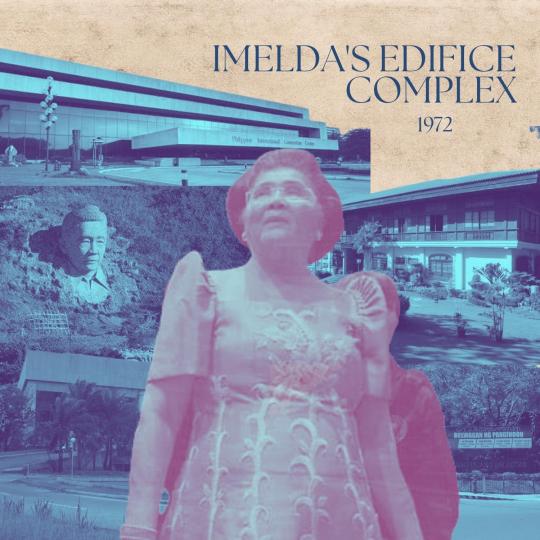
The Marcos dictatorship was obsessed with completing various costly and lavish projects in the events leading up to and during Martial Law. The term "edifice complex" refers to the obvious contempt for poverty in favor of the continuous development of massive structures to display a non-existent affluence.
The term "edifice complex" was invented by director and activist Behn Cervantes as a play on the phrase "Oedipus Complex." The extravagant and opulent constructions that resulted from this "edifice complex" still exist and are in use today. These structures are used as examples to highlight the "Golden Era" of the Marcos regime and the Martial Law period, ignoring the dire economic situation and poverty of the time; the extravagant projects have successfully fulfilled their roles as elements of the Marcosian landscape of power, serving as facades to hide the various atrocities, human rights violations, hunger, unemployment, and corruption prevalent during those years, as well as leaving a lasting legacy.
Ferdinand Marcos Sr. is well-known for his “achievements” especially his administration’s contribution to the infrastructure development in the Philippines. Images of these constructions are often shared on social media by trolls and apologists to remind people of Marcos' successes, contributing to the widespread historical revisionism that exists today. Very well-known as I may say that another Marcos made it to Malacañang because of the “achievements” of his dictator father.
With Marcos’ accomplishments in public infrastructure, there is no doubt many people were convinced he was a great president, some even refer to him as the best president, but is he really? If you are one of those who think the same thing about Ferdinand Marcos Sr. just because he supposedly built a lot of infrastructures that are still in use today, better think again.
While the Marcos family and loyalist thinks this is worth bragging, this show off obviously came with a cost, a huge cost actually. Many of Marcos' initiatives were financed by foreign loans, leaving the Philippines with an estimated $28.3 billion in debt by 1986, resulting in the greatest economic crisis and inflation in Philippine history. The economic downturn was felt most acutely in the provinces, where poverty, unemployment, and starvation surged. Moreover, these projects were also notorious for outrageous overspending, extravagance, and corruption.
Furthermore, while some construction projects have cultural value, others are "overdesigned bridges, highways, public buildings, or large energy projects designed to secure a political constituency, to get a commission, or to corner a contract," according to economist Emmanuel de Dios and colleagues at the University of the Philippines in a 1984 paper.
Experts anticipate that it will take the Philippines till 2025 to fully repay the debt, over 40 years after the EDSA People Power Revolution. Marcos and his associates are accused of overpricing the projects in order to grab billions of dollars in bribes, which Filipinos are still paying for.
So when someone tells you to “Move on!”, “Past is past”, and “Forgive, forget and move on!”, Move on if you must, but one thing is certain: Filipinos cannot yet move on from the debt Marcos spent to build his projects. It is still debatable whether the utilization of these structures exceeds their cost and renovation requirements.
Presented ahead are some of the infrastructure projects built under the Marcos government along with the frequently forgotten stories that accompanied their construction.
Cultural Center of the Philippines (CCP)
The CCP, a well-liked location for foreign exhibitions and performances, was constructed in Pasay City in 1966 as a result of Marcos' Executive Order 30. On Sept. 8, 1969, the 62-hectare facility was inaugurated.
Since it was built, the CCP is believed to have consistently run short on funds; as a result, it constantly asks for refurbishment and depends on contributions and government assistance to exist. For the rehabilitation and expansion of the facility, the government has recently spent an additional P2 billion.
The Manila Film Center
The Manila Film Center, which Imelda Marcos initially envisioned as a national film archive, was located at the southwest corner of the CCP.
The building's construction had a tight timeline and required about 4,000 workers to work in three shifts continuously throughout the day. For instance, the lobby, which was supposed to be constructed in six weeks, was only constructed in 72 hours.
Bataan Nuclear Power Plant
The government had spent $2.3 billion on the facility by the time it was virtually finished in 1984. The nation only paid it off in April 2007, 30 years after it was built.
The government still pays P40 million every year to maintain the facility. The facility was converted into a tourist attraction to assist offset the costs of upkeep. Solar, wave, and wind power were also proven to be less expensive than nuclear power as alternative energy sources, making the plant's use now and in the future questionable.
Malacañang of the North
The Malacanang of the North is a massive and lavish house built on the banks of Paoay Lake. The Philippine Tourism Authority (PTA) gave it to Ferdinand Marcos on his 60th birthday. The land has been in the public domain since 2014, yet Bongbong Marcos continues to assert that the Marcoses owns it.
Marcos Bust
Ferdinand Marcos' bust was a 30-meter concrete monument at Tuba, Benguet. The Ibaloi tribe owned the land on which it was built, and the military harassed and forcefully evicted them. As a consequence, 81 families from the Ibaloi tribe were relocated. It was blown up using explosives on December 29, 2002. Many parties claimed credit for the structure's demolition, but the true perpetrators were never identified.
Philippine International Convention Center (PICC)
Formerly part of the CCP complex, the PICC was billed as Asia's first international convention center, hosting both domestic and global meetings and conventions.
It was established on September 5, 1976, by Presidential Decree No. 520 issued by Marcos.
It, too, has deteriorated, with many pieces no longer or infrequently utilized. It is no longer held by the CCP since it was utilized to settle some of the debts accumulated by the CCP during the Marcos administration.
The Tanghalang Francisco Balagtas (Folk Arts Theater)
The Folk Arts Theater, commissioned by Imelda Marcos in 1974 for the Miss Universe pageant in Manila, was planned to accommodate 10,000 people. It is still utilized as a theater today, despite the fact that it should have been demolished a long time ago because it was completed in record speed of only 77 days.
Coconut Palace (Tahanang Filipino)
Imelda desired a home that embodied everything Filipino in terms of design, philosophy, materials, and execution. Thus the Tahanang Filipino was constructed in 1981.
It was commissioned in 1978 as a government guest home by former First Lady Imelda Marcos and offered to Pope John Paul II on his 1981 visit to the Philippines, but the Pope refused to stay there because it was too extravagant given the degree of poverty in the Philippines.
The coconut levy fund, which was established to be used for the welfare of coconut farmers, helped to partially finance the construction of the Coconut Palace, which cost 37 million pesos. Its development has occasionally been linked to Mrs. Marcos' "edifice complex.”
Nayong Pilipino
Imelda's idea was to build the Nayong Pilipino near Ninoy Aquino International Airport in 1969. It operated as a theme park with reproductions of the country's tourism attractions for 32 years until being relocated to Clark, Pampanga, where it is currently the subject of an alleged gambling anomaly.
In 1873, Ileana Maramag was reported by Lico as saying: "The concern actually was to what extent authenticity was damaged in the process of transplanting to Imelda's theme park."
San Juanico Bridge
Marcos built the bridge as a personal present for his wife Imelda, using public cash diverted from the Marcos-Japan ODA scam. It was one of Marcos's high-profile foreign-loan projects in the run-up to the 1969 presidential election. It was finished four years later and dedicated on July 2, 1973, Imelda Marcos' birthday. When it was finished, economists and public works engineers labeled it a "white elephant," defined as "a asset that is worthless, costly to maintain, or difficult to dispose of," because its average daily traffic was insufficient to justify the expense of its construction.
Makiling Center for the Arts (National Arts Center)
The National Arts Center is a cluster of buildings located on Mount Makiling in Los Baos, Laguna, Philippines. The institution first opened its doors in 1976. The Tanghalang Maria Makiling, also known as the NAC Center, has a seating capacity of 1,000 persons.
Aside from the theater, other locations include the Pugad Aliguyon or Marvilla Cottages, the Pugad Adarna or Executive House, a two-story clubhouse called the Bulwagang Sarimanok, and St. Marc's Chapel. Leandro Locsin created the chapel's cross, which depicts a crucified Jesus Christ.
People's Park in the Sky
People's Park in the Sky was founded in 1981 as a guest home for then-US President Ronald Reagan, but the visit was cancelled after Marcos was deposed in 1986. It is now a park with Mother of Fair Love, The Shrine of Our Lady, and a Philippine Atmospheric, Geophysical, and Astronomical Services Administration weather station (Pagasa).
The then named People’s palace in the Sky’s construction, radically altered the topography of the Cavite highland, because preparations for the building required flattening the geographically separate Mount Sungay to nearly half its original height.
Philippine Heart Center National
This hospital in Quezon City, formerly known as the Philippine Heart Center of Asia, was erected by Marcos under Presidential Decree No. 673. Since its inception in 1975, it has been the location of hundreds of procedures, including what was reported to be the country's first successful kidney transplant.
According to Maramag, as stated by Lico, the facility was Imelda's "monument to the heart" in 1975. The "designer hospital" by Architect Jorge Ramos was purportedly completed to honor Imelda's request that the structure be launched on Valentine's Day.
Kidney and Transplant Institute
The hospital, formerly known as the "National Kidney Foundation of the Philippines," was built in 1981 and claimed to have hosted several firsts in the Philippines, but only after the Marcos administration. These included Asia's first double kidney and pancreas transplant in 1988, Asia's first kidney and liver transplant in 1990, and the Philippines' first bone marrow transplant in 1990.
The institute has recently been under criticism for reportedly acquiring specialist medical equipment worth P750 million without going through public bidding.
Lung Center of the Philippines
This hospital in Quezon City was created under Marcos' Presidential Decree No. 1823 in 1981 to provide health treatment for lung and pulmonary ailments. In 1988, a fire destroyed much of the center. It reopened in 1999 and is currently under development.
With Marcos’ accomplishments in public infrastructure, there is no doubt many people were convinced he was a great president, some even refer to him as the best president, but is he really? If you are one of those who think the same thing about Ferdinand Marcos Sr. just because he supposedly built a lot of infrastructure that are still in use today, better think again.
While the Marcos family and loyalists think this is worth bragging about, this show-off obviously came with a cost, a huge cost actually. Many of Marcos' initiatives were financed by foreign loans, leaving the Philippines with an estimated $28.3 billion in debt by 1986, resulting in the greatest economic crisis and inflation in Philippine history. The economic downturn was felt most acutely in the provinces, where poverty, unemployment, and starvation surged. Moreover, these projects were also notorious for outrageous overspending, extravagance, and corruption.
Sources:
Afinidad-Bernardo, D. R. M. (2017). Edifice complex: 31 years of Amnesia. Philstar.com. Retrieved September 21, 2022, from https://newslab.philstar.com/31-years-of-amnesia/building-spree
Edifice complex: Building on the backs of the Filipino people. Martial Law Museum. (n.d.). Retrieved September 21, 2022, from https://martiallawmuseum.ph/magaral/edifice-complex-building-on-the-backs-of-the-filipino-people/
MARCOSIAN EDIFICE COMPLEX AND LANDSCAPES OF POWER. (2020, September 24). [web log]. Retrieved September 21, 2022, from https://www.facebook.com/geographicsociety.up/posts/marcosian-edifice-complex-and-landscapes-of-powerin-the-events-leading-to-and-du/4956263577778793/.
9 notes
·
View notes
Text
A Shrine for the People's Power
By: Hannah De Guzman
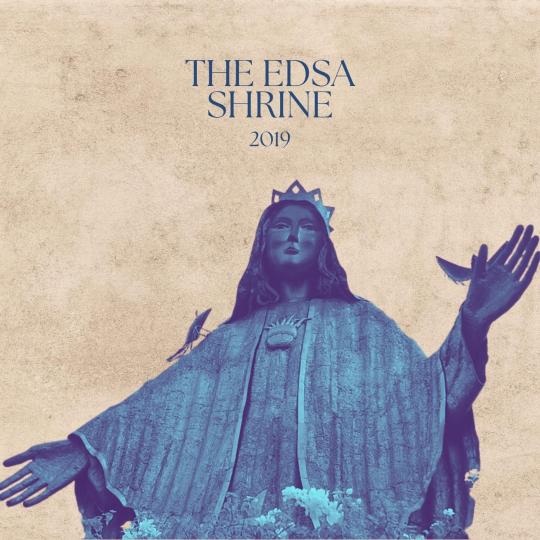
The EDSA Shrine is arguably the most significant landmark to have appeared in the metropolis in the nation's post-EDSA 1 history since it serves as a reminder of the success that Philippine democracy has brought, both locally and internationally. It was built in 1989 to commemorate the People Power Revolution. Since it was a "peaceful revolution" that was thought to evoke the reality of her presence at EDSA during the event, it was established that the monument would be a shrine dedicated to Mary, the mother of Jesus as the "Our Lady of Peace."
According to Architect Mañosa’s wife, Denise Mañosa, the project's intended location was a 5,000 square meter piece of property inside Camp Crame when Cardinal Sin first approached Mañosa with the idea. However, it was discovered that any church constructed on government property had to be ecumenical and could not be exclusively Catholic. As a result, the location was changed to the intersection of Ortigas Avenue and Edsa on land given by the Ortigas family. It was then that to offer greater space, John Gokongwei donated more land.
The vision of the shrine was a “People’s Basilica” with the structural outline of the Bahay Kubo. Mañosa had a different vision for the structure that wasn't like the one that was existing. The architect's concept for the shrine, which he called the "People's Basilica," is an expanded version of the Bahay Kubo. The original plan intended to frame a figure of the Virgin Mary with seven pitched roofs. One influential committee member, however, opposed the plan and preferred a Spanish colonial design for the EDSA Shrine and Cardinal Jaime Sin only persuaded Mañosa to stay committed to the project and provide the design for the existing edifice when the architect thought of withdrawing from the project.
Lyrics of Handog ng Pilipino sa Mundo are written on the wall of the shrine. After the revolution, when Cory Aquino was only a few months into her presidency and the nation aspired to re-establish the democracy it had lost, the idea for Handog ng Pilipino Sa Mundo developed. It was a song written by APO Hiking Society member Jim Paredes, who was inspired by the People Power Revolution's triumph. The song's lyrics are etched on a wall of the Our Lady of EDSA Shrine, which served as the center of the bloodless uprising that toppled President Ferdinand Marcos after 20 years in power.
The Shrine of Mary, Queen of Peace was recognized as an "Important Cultural Property" by the National Commission for Culture and the Arts (NCCA) in 2019, allowing the government to provide funding for the preservation and restoration of the shrine. The 1986 People Power Revolution memorial was "uniquely designed in terms of function and form which can be easily recognized as the National Artist's work," according to NCCA. “His dedication to Philippine vernacular architecture has made him the Philippine state's top choice for designing its pavilions at expos and fairs around the world”, they added. The architect's battle cry was, "I design Filipino, nothing else" was noted.
Sources:
Mañosa, D. (2017, February 25). Things you didn't know about the EDSA shrine. INQUIRER.net. Retrieved September 21, 2022, from https://business.inquirer.net/225232/5-things-didnt-know-edsa-shrine
NCCA declares EDSA shrine an 'important cultural property'. Inquirer Lifestyle. (2019, April 21). Retrieved September 21, 2022, from https://lifestyle.inquirer.net/332581/ncca-declares-edsa-shrine-an-important-cultural-property/
The Story of EDSA Shrine. EDSA Shrine - Shrine of Mary, Queen of Peace, Our Lady of EDSA. (n.d.). Retrieved September 21, 2022, from http://www.edsashrine.org/2016/08/the-story-of-edsa-shrine.html
9 notes
·
View notes
Text
The Idle Power Giant: The Never-ending Controversy Over the Bataan Nuclear Power Plant
By: Rica Agustin
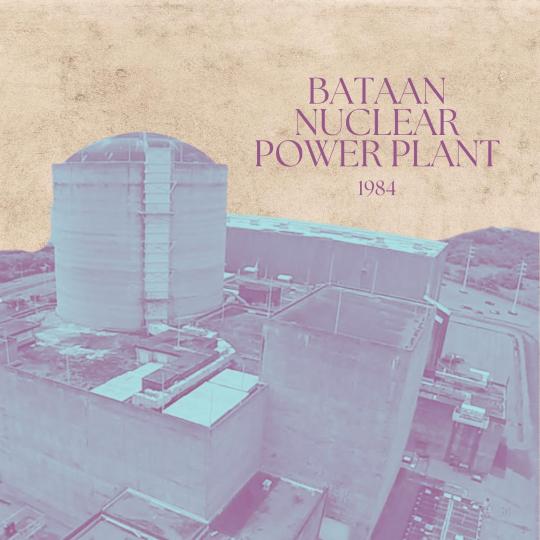
Since the time of the late former president Ferdinand Marcos Sr., the Bataan Nuclear Power Plant has been the subject of much controversy. When the son of the late president Ferdinand Marcos Jr. was elected president of the republic of the Philippines, the BNPP controversy has flared up once more.
The 620-megawatt BNPP was built in 1976 in response to the energy crisis of the 1970s, four years after Marcos declared martial law. The purpose of this was to create a new power plant that would feed into the Luzon grid and reduce the country's reliance on foreign oil. Upon its initial launch, the BNPP was hailed as Southeast Asia's first nuclear power plant. Westinghouse Electric Co.'s "vague, undetailed bid for two nuclear plants" in 1974 estimated a cost of US$500 million, but by the time construction was completed in 1984, the price had risen to US$2.3 billion.
The BNPP faced criticism before, during, and after its construction. Criminal charges were brought against Westinghouse because of the BNPP's many problems, including President Marcos's connections to the company, a disagreement between General Electric and Westinghouse, and problems with protocol during and after construction. Dumaine, writing two years after the plant was finished, described the entire controversy in detail. The Philippines filed charges of bribery and overcharging against Westinghouse and Burns and Roe after the fall of Marcos in 1986. Allegedly, Marcos and his inner circle took millions in kickbacks from a contract with Westinghouse and Burns and Roe that was arranged by Marcos's friend and business associate Herminio Disini. After the Marcoses fled Malacañang in the midst of the "people power" revolution in February 1986, documents revealing their ill-gotten wealth were discovered. Westinghouse Electric Co. is accused of giving Disini millions in kickbacks.
The BNPP was nearly finished and ready for commercial operations in 1986 when the Marcos administration was toppled by the historic EDSA People Power Revolution, which ultimately led to the election of Corazon "Cory" Aquino, the widow of the late opposition senator Benigno "Ninoy" Aquino, as president. At about the same time, the No. 4 reactor at the Chernobyl Nuclear Power Plant in Ukraine went out of control during a test and exploded, destroying the reactor building and discharging large amounts of radiation into the atmosphere. This was widely regarded as the worst nuclear disaster in terms of both cost and casualties. Bataan locals, along with environmental and cause-oriented groups, strongly opposed the project's operation after the meltdown for safety reasons, and the Aquino administration ultimately decided not to operate the nuclear power plant that had become controversial.
So far, $2.1 billion has been spent on a nuclear plant that will never be used, and the interest on the loans is costing an additional $350,000 per day. It is estimated that the idle plant will cost $320 million in 1993. In 2020, almost 32 years after the BNPP was finished, the Philippines finally paid off all its loans and interest. After spending P43.5 billion on principal amortization and P21.2 billion on interest, the government has spent a grand total of P64.7 billion on the nuclear power plant that has never produced even one watt of electricity.
The debt of the Philippines was paid for by Filipinos even though it has never been used. Ferdinand "Bongbong" Marcos Jr., who was running for president, and Davao Mayor Sara Duterte-Carpio, who was running as his running mate, made promises during the recent campaign season to speed up the adoption of nuclear power if they were elected, which would presumably entail reevaluating the BNPP. The BNPP has been the subject of numerous unsuccessful attempts by foreign investors to bring it back to life. Again, the new controversy has been brought up, and some Filipinos are concerned about the money that will be wasted if the power plant can't be revived.
Sources:
Rappler. (2019). MISLEADING: Bataan Nuclear Power Plant ‘wasted by Cory Aquino’. Retrieved from https://www.rappler.com/newsbreak/fact-check/235148-bataan-nuclear-power-plant-issues-cory-aquino/
Angeles. (2022). The Bataan Nuclear Power Plant: Is there any hope in reviving this shell of a Marcos Sr. project?. Retrieved from https://philstarlife.com/news-and-views/883943-the-bataan-nuclear-power-plant
Camacho. (2017). The Controversy of the Bataan Nuclear Power Plant. Retrieved from http://large.stanford.edu/courses/2017/ph241/camacho2/
9 notes
·
View notes
Text
The Manila Film Center: When Art becomes Tragedy
By: Dhanica Panaguiton
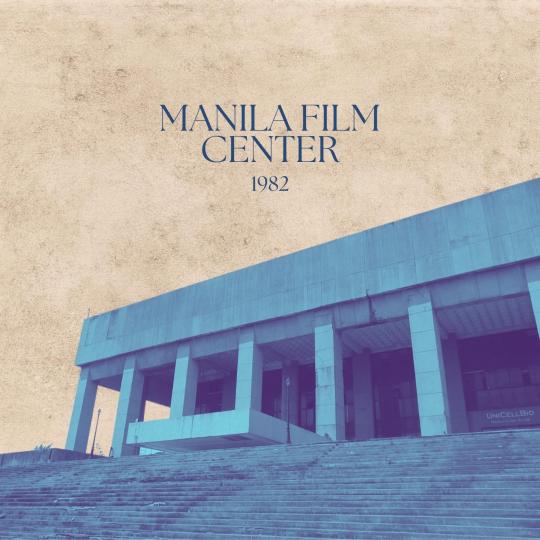
The Philippines was placed under martial law on September 23, 1972, by the country's then-president Ferdinand Marcos. There was a dictatorship known as "martial law" in the Philippines, where Ferdinand Marcos and his family eventually held power for more than 20 years. Over the course of the Marcoses' 20-year rule, many people died, and women and children are also being killed in order to obtain information.
Imelda Marcos' building complex was therefore well established in 1981 when she had another wild idea. And that concept was to hold the inaugural Manila International Film Festival. She imagined this famous occasion as the Eastern Cannes Film Festival. Naturally, she reasoned, the Manila Film Center needs to be built in order for this event to truly gain publicity. The Manila Film Center, an eight-story structure modeled after Athens' Parthenon, was created as a shining example of the Marcos regime and a tribute to it. Just three months before the scheduled date of the Manila International Film Festival, construction on the $25 million-estimated Manila Film Center started. Imelda called in hundreds of people to alternate between three shifts throughout the day in order to reach this ridiculous schedule. In my research, I've come across estimates ranging from 4,000 to 8,000 workers. A lobby as impressive as the one in the Manila Film Center would generally take around six weeks to complete, according to Esquire Magazine Philippines. Imelda Marcos, however, gave the workers a deadline of fewer than 72 hours. Imelda Marcos ignored the warning signs of impending doom and was only interested in getting her film center at whatever cost. And that price would be paid soon.
On November 17, 1981, at around three in the morning, a rotating shift of laborers was still at work when scaffolding collapsed on top of them, encasing them in rapidly setting cement. In order to finish the building on schedule, the workers were pushed to pour quick-drying cement on each story without first allowing each layer to dry. Unfortunately, too much cement was poured, weakening the structure of the building, and that same cement, which dries quickly, is what eventually trapped these workers. Despite the terror unfolding at the Manila Film Center, Imelda Marcos and her associates were busier, more concerned about the public scandal that would ensue. As a result, while the workers inside were urgently battling for their lives, Imelda Marcos and her associates enforced a media blackout. At least 168 of the workers had already passed away due to the lack of emergency assistance, and many of them had been horrifyingly discovered impaled by steel bars or buried in the quickly drying cement. And that's just a concept, a vision, something I'm not quite sure how to begin to comprehend.
So far, no one has been held responsible for what happened to the people who built the Manila Film Center. Justice is extremely difficult to acquire in the Philippines. Furthermore, I believe that Filipinos have become accustomed to the impression that obtaining justice when you are in the wrong is difficult. When you have anything stolen from you, you are unlikely to get it back. If you are poor, you will most likely remain poor. That culture, I believe, was formed by the Marcoses and persists to this day, even in subsequent governments.
Sources:
The Mysterious Curse of the Manila Film Center, (2019) by Nicai De Guzman Retrieved date: 07 November 2022, from: https://www.esquiremag.ph/long-reads/features/manila-film-center-haunted-a1729-20191107-lfrm2
Manila Film Center Tragedy, (2010) by Lisa Waller Rogers Retrieved date: 31 March 2010, from: https://lisawallerrogers.com/tag/manila-film-center-tragedy/
The horrifying mystery of manila haunted cinema, (2017) by Valerie Caulin Retrieved date: 2 November 2017 from: https://theculturetrip.com/asia/philippines/articles/the-horrifying-mystery-of-manilas-haunted-cinema/?amp=1
11 notes
·
View notes
Text
Cultural Center of the Philippines: A Recap on its Roots
By: Adrienne Ocampo

It is undeniably true that Marcos was highly influential in the establishment of public infrastructure, and with numerous roads, the CCP Complex is one of the structures built during his era that are continuously in use today. On the other hand, Marcos' triumphs in public infrastructure came at a price. Many of Marcos' programs and projects were financially supported by external debt, having left the country with an estimated $28.3 billion in debt by 1986. These projects have also been widely popular for their high overspending, extravagance, and corruption.
The Cultural Center of the Philippines (CCP) complex was designed and constructed on land taken from naval battles as a component of the Marcos administration's insistence on cultivating Filipino civilization and "the Filipino soul." It was completely designed by architect Leandro Locsin. It served as the venue for many artists' masterpieces.
The Cultural Center of the Philippines (CCP), also referred to as the Sentrong Pangkultura ng Pilipinas, is found in Pasay, Metro Manila, on the reclaimed ground along Roxas Boulevard. the whole facility spans 88 hectares of land. It provides performance and exhibition spaces for both international and domestic performances. the power also accommodated a variety of union cultural events. The venues varied first from Miss Universe Pageant in 1974, which prompted the creation of the people Arts Theater, to the 1982 Manila International festival, which prompted the contentious Manila Film Center to be built. The Coconut Palace, also called Tahanang Pilipino, is similar because the Philippine International Convention Center is a part of the property.
As per the observations, the Cultural Center of the Philippines (CCP) structure had outstanding scenery and a green grass landscape, and most visitors appreciated the natural character of the placement. They likewise adored the mesmerizing glimpse that their eyes observed. Plus, the general public within the area is bicycling, others are playing, some are jogging, and a few are practicing something. People are just sitting nearby, taking in the breathtaking scenery. The stunning fountain is the highlight of the realm. It was absolutely enormous and spectacular, and other people appreciated its unique design and shape, which resembled a loop. The water within the fountain wasn't clear enough to determine reflections; it had a dark brown tone, and lots of fish swimming in it, some species of fish, which was enjoyable to determine. However, this grand infrastructure ultimately drained the government's finances because it was absolutely built with borrowed funds. Marcos got the complex's development with funds from the Cultural Development Fund, funds raised by Imelda, and loans from the globe Bank and therefore, international money. By 1972, the CCP has burdened with a debt of PhP 63 million from the theater's construction alone. Not soon after declaring the law, late former president Ferdinand Marcos enacted a bailout of the CCP, with the government usurping the center's financial liabilities. Was it worth it? It's hard to see its value when the towering debt is too much to ignore.
Sources:
Manapat, R. (1991). Some are smarter than others: A history of Marcos’ crony capitalism. Aletheia Publications.
Edifice Complex: Building on the Backs of the Filipino People. Martial Law Museum. Retrieved September 21, 2022, from https://martiallawmuseum.ph/magaral/edifice-complex-building-on-the-backs-of-the-filipino-people/
15 notes
·
View notes
Text
PADUGO: The Urban Legend behind the Bloody Tales of The Longest Bridge in the Philippines built in Marcos’ Regime
By: Anne Baldemor

During the Marcos regime, San Juanico Bridge did not just refer to the longest bridge in the country. It had a far more sinister meaning. It has been said that the San Juanico Bridge or was once known as the ‘Bridge of Love’ and as ‘Marcos Bridge’ was dubbed as the Longest Bridge in the Philippines under the Late President-Dictator, Ferdinand Marcos Sr.’s regime. It was a personal gift for her spouse, Imelda Marcos who is a native of Leyte Province (using the public funds siphoned through the controversial Marcos Japanese ODA scandal), which also makes the bridge a symbol of love by Waraynons which connects the sister islands of Samar and Leyte. The construction went on for 4 years, starting 1969 and costs 21.9 million dollars.
Aside from the picturesque view and the beauty that it offers, there has been say-so’s going around that makes the superstructure spine-chilling.
Some say that the secret mixture behind the foundations of the bridge were made sturdier by adding blood of babies and some street children; after which a ritual was performed. During the bridge’s construction, many children coincidentally disappeared in Samar and Leyte. The disappearances only stopped after the bridge was completely constructed. Some say the children were added inside the cement mixer by the construction workers while preparing. It started when a woman in-charge (which was Imelda herself in suspicion) to supervise the construction consulted a ‘manghuhula’ or a fortune teller and was said that in order for the bridge to be completely successful and can withstand the construction was to mix some blood of children on the foundation. Which makes the workers being ordered to kidnap children and slit their throats splattering the blood on to the site.
That’s how the ‘Padugo’ or blood-letting was being practiced before the house is constructed. Many believe that this will drive away evil and also, keep the structure as firm and as sturdy as possible. San Juanico Bridge has stood the test of time and stood witness to different events on Samar and Leyte. Even with that being said, Marcos did have multiple projects under their name because of dictatorship and most of these major projects that were constructed involved bloodshed which makes his regime a history of torture and atrocity.
Never Again and Never Forget.
9 notes
·
View notes
Text
A Peek Inside the Opulent Coconut Palace
By: Pauline Yumul
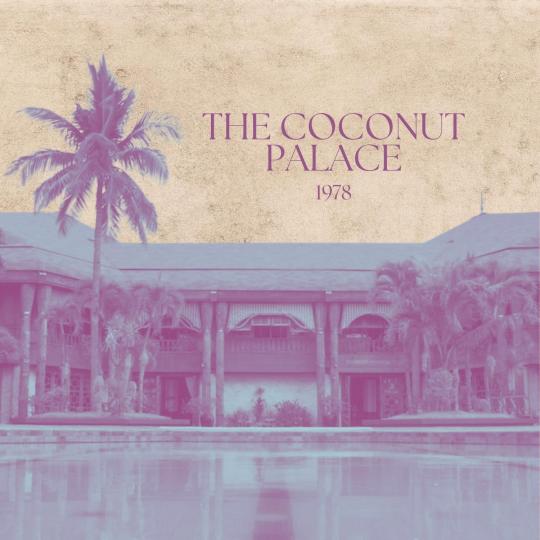
Commissioned by former First Lady Imelda Marcos, who is well known for her shoe collection and passion for luxurious living, as well as being the wife of former President Ferdinand Marcos. The Coconut Palace was erected in 1978 to accommodate Pope John Paul II for his 1981 visit to the nation. The Pope, on the other hand, correctly declined to stay in this luxurious residence while visiting a poor country after learning that it cost the Filipino citizens ₱37,000,000 roughly equal to the worth Purchasing Power Value of ₱670,000,000 in 2022. His refusal was a well-publicized protest against the Marcoses, who lived extravagantly while millions of Filipinos lived in abject poverty.
The Coconut Palace is also known as “Tahanang Pilipino”, which was believed to be like no other home that has ever been built. It has a truly unique construction with an unusual architectural style. All parts of the coconut (roots, trunk, leaves, fruits, shells, bark, and even blossoms) are reflected in the palace's architecture. A design of interconnecting hexagons and half hexagons in a honeycomb pattern was planned. The hexagon was chosen as the unifying design element by accident: when stitched for planks, a coconut tree trunk is first formed into a six-sided column. Fresh coconut is opened similarly by cutting the husk along six sides. In any event, the recurring hexagonal forms within and beyond the Tahanang Pilipino's spaces offer a feeling of organic coherence. The hexagon is replicated and echoed in the inlay pattern on the marble flooring, the shape of the swimming pool, the twin stairs that go from the main floor to the higher rooms, and the many subtle features of the interior.
On a grand scale, the Tahanang Pilipino derives from the Bahay na Bato ancestral home, it has a ground floor of stone and an upper floor of wood. However, a creative reconfiguration of the family home's characteristic design forms, as well as its primary principle of "space surrounded by space," transforms it into an entirely contemporary interpretation. The six-sided domed double roof of coconut wood shingles, shaped like a salakot, or farmer's gourd hat, is the most striking external feature. A set of paired columns, which are inverted coconut trunks with a unique bulge at the root end producing capital, support, and balance the mass of the roof. With its high ceiling, sumptuous decorations, and dramatic interplay of light and shadow, the great entry hall accentuates the vast grandeur of the Tahanan. The main dining hall is also an elongated hexagon that opens on one side to the front garden and on the other to a receiving room.
From the entry hall, a collection of hexagonal rooms that make up the living room, music room, library, and a second reception room extend. The use of glass doors, antesalas, and landings create continuity between areas that are reminiscent of the family home. Overall, the interiors represent the Filipino's nearly Baroque taste, with their love of adornment, elaboration, and enrichment. Grand chandeliers made of coconut shells and crystal beads create dramatic centerpieces in the foyer and main halls, but the minor elements, such as cornices, moldings, inlays, and filigrees, have received equal care.
Before being the official residence of the country's vice president, it served as a guest house for celebrities such as Brooke Shields and George Hamilton. It has also appeared on television series such as The Amazing Race and Tanging Yaman. The palace also hosted wedding receptions. In 2011, Jejomar Binay was given it as his official office and house as Vice President of the Republic of the Philippines. While it is meant to reflect the Filipino people's ingenuity and tenacity, as well as the nation's cherished coconut tree, the objective for its creation and the identities of those involved do not resonate well with the Filipino people. The Coconut Palace has undoubtedly heard many secrets of the Marcos government since it has sheltered world dignitaries, cronies, and the often-elusive visitors who avoid media scrutiny. If walls could talk, they would undoubtedly reveal the many unanswered catastrophes under Martial Law. Sources:
Buildeee. (2022). The Coconut Palace (2022 Public Visits Update). Buildeee.com. Retrieved 21 September 2022, from https://buildeee.com/articles/the-coconut-palace.
Coconut Palace MAÑOSA & COMPANY. Manosa.com. (2022). Retrieved 21 September 2022, from http://www.manosa.com/~manosa/teddy/project.php?/architecture/residential/coconut-palace-ccp-complex-pasay-city/&id=3#.
Esquire. (2020). Retrieved 21 September 2022, from https://www.esquiremag.ph/long-reads/features/inside-the-famed-coconut-palace-a00293-20200422-lfrm.
SunStar. (2016). The Coconut Palace. SUNSTAR. Retrieved 21 September 2022, from https://www.sunstar.com.ph/article/83902/the-coconut-palace.
The Coconut Palace. Planet of Hotels. (2022). Retrieved 21 September 2022, from https://planetofhotels.com/guide/en/philippines/manila/coconut-palace.
17 notes
·
View notes